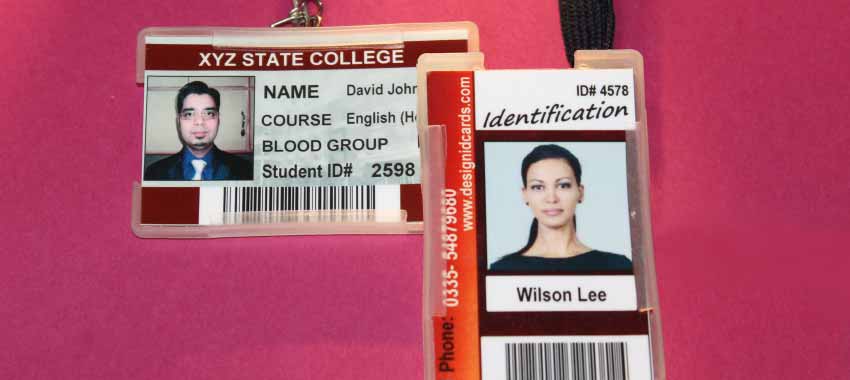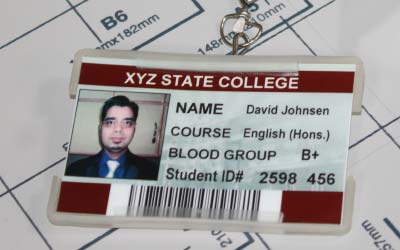Ensure that Student ID Badge Design is Unique and Visually Appealing
To ensure that your student ID badge design is unique and visually appealing, consider the following strategies:-
-
Typography and Fonts:
Choose typography that enhances readability and reflects the desired aesthetic. Select fonts that are legible and appropriate for the purpose of the ID badge. Experiment with font combinations to create visual interest and hierarchy within the design. Avoid using too many different fonts to maintain a cohesive and professional appearance.
-
Research and Inspiration:
Start by conducting research and gathering inspiration from various sources, including design websites, student ID badge galleries, and other educational institutions. Explore different design styles, color schemes, typography, and layout ideas. This research phase will help you gather ideas and understand current design trends.
-
Branding and Visual Identity:
Align the ID badge design with the school's branding and visual identity. Incorporate the school's colors, logo, and typography to create a cohesive look and feel. This helps establish a strong visual connection between the badge and the institution, enhancing recognition and school spirit.
-
Unique Design Elements:
Introduce unique design elements to make your ID badge stand out. Experiment with different shapes, patterns, or graphical elements that reflect the school's personality and culture. Consider incorporating illustrations, icons, or textures that are relevant to the institution or the student community.
-
Test and Iterate:
Once you have created a design, seek feedback from others, such as colleagues, students, or design professionals. Conduct user testing to evaluate the design's effectiveness and appeal. Gather constructive feedback and iterate on your design based on the insights received. This iterative process ensures that your design continuously improves and meets the desired goals.
-
Color Palette:
Create a visually appealing color palette that complements the school's brand colors while considering legibility and accessibility. Use colors strategically to create contrast and hierarchy. Consider the psychology of colors and how they can evoke certain emotions or associations. Balance vibrant and neutral colors to achieve a visually pleasing composition.
-
Use High-Quality Images and Graphics:
If you plan to incorporate images or graphics in your ID badge design, ensure that they are high quality and visually appealing. Use images that are relevant to the school or the student's academic journey. Avoid pixelated or distorted images that may detract from the overall design quality.
-
Attention to Detail:
Pay attention to the smallest details in your design. Ensure that lines are straight, corners are sharp, and text is aligned properly. Check for typos or inconsistencies in information. Attention to detail contributes to the overall professionalism and quality of the design.
-
Layout and Composition:
Pay attention to the layout and composition of the ID badge design. Ensure that the essential information is prominently displayed and easily readable. Create a visual hierarchy by varying the size, weight, or color of different elements. Use grids or alignment techniques to maintain consistency and balance within the design.
-
Stay Unique:
While seeking inspiration and exploring design trends is important, aim to create a design that stands out and represents the uniqueness of your institution. Avoid copying designs directly from other sources to maintain originality. Focus on creating a design that reflects the school's identity and captures the attention of students and staff.
Strategy: By incorporating these strategies, you can create a student ID badge design that is visually appealing, unique, and aligned with your institution's branding. Remember that the design should not only be visually pleasing but also functional and effectively convey the necessary information for identification and access control.
The Different Design Styles and Layouts are available for Student ID Badges
When it comes to design styles and layouts for student ID badges, there are several options to consider. The choice of design style and layout depends on the institution's branding guidelines, the desired aesthetic, and the level of customization allowed. Here are some common design styles and layouts for student ID badges:

